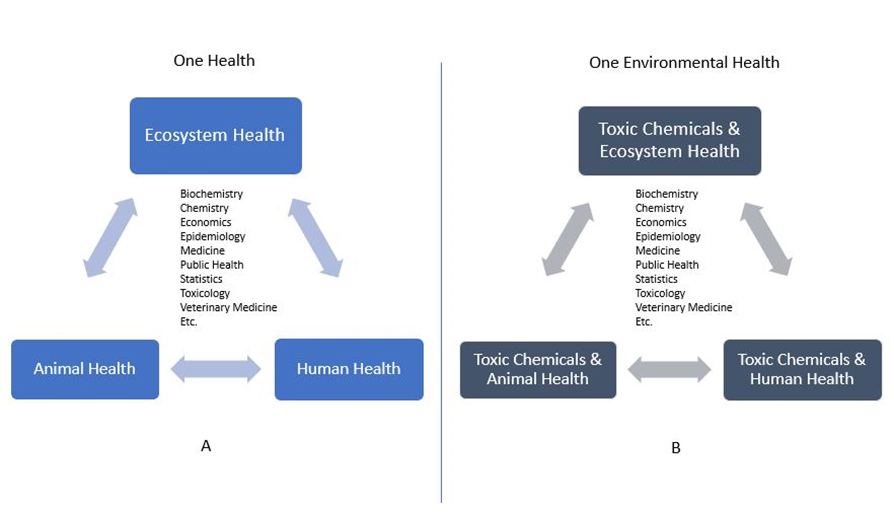February 1, 2024

John Pierce Wise, Sr., Ph.D., studies how hexavalent chromium leads to lung cancer. Wise was awarded the 2022 Toxicologist Mentoring Award by the Society of Toxicology. (Photo courtesy of the University of Louisville)
John Pierce Wise, Sr., Ph.D., was an undergraduate pursuing biology, with a strong interest in marine biology, when a classmate connected him with a lab studying chromosomes. This pivotal lab experience ultimately led him to a career researching how particulate chromium destabilizes chromosomes and causes cancer.
“It’s all serendipity. After my postdoctoral position in a molecular epidemiology lab, I had an opportunity at Yale to research how chromium causes cancer and got to use my knowledge of toxicology, molecular epidemiology, and risk assessment,” Wise said.
Wise reflected on how collaboration, including with students, leads to exciting discoveries and on the role his mentors had on his path to success.
“Collaboration and mentorship are immensely important in my research,” Wise said. “Mentors don’t only open doors for you, but they help you understand what it is you need to do to succeed. And that makes all the difference.”
Today, Wise is a professor in the Department of Pharmacology and Toxicology at the University of Louisville and a recipient of the NIEHS Revolutionizing Innovative, Visionary Environmental health Research (RIVER) program grant. The RIVER program seeks to improve long-term research outcomes by focusing on broad goals rather than specific research aims which allows investigators to pursue new directions as they arise.
“The RIVER program is a fantastic funding mechanism because it funds a vision and gives you the flexibility to pursue where the data takes you,” said Wise.
Uncovering the Hexavalent Chromium and Cancer Connection

Chromium is a metal with several different forms, and while some forms are not harmful to health, hexavalent chromium is a carcinogen. Hexavalent chromium is a widely used industrial chemical, which can lead to occupational exposure for workers and environmental exposure for broader communities if hexavalent chromium enters water or air.
Wise and his collaborators wondered what kind of damage hexavalent chromium does in a cell that could lead to cancer.
Wise and collaborators found that hexavalent chromium can break both strands of the DNA helix, a critical factor associated with cancer development. To their surprise, the team also found that prolonged exposure to hexavalent chromium also inhibits the ability of cells to repair these DNA double strand breaks.
Bridging Research Interests
Wise’s research on chromosome instability and early interest in marine biology overlapped when he began to study whale tissue in collaboration with the Mystic Aquarium in Connecticut. Whale species vary in susceptibility to cancer. Wise and collaborators found that several species of whales known to develop cancer had environmental exposure to chromium and other metals.
“Data from whales can tell us about what metals are doing to marine mammals and we can make conclusions about the risk of those chemicals for that species.” stated Wise. “In whales, hexavalent chromium causes the same amount of DNA breaks as it does in humans, but it doesn’t inhibit break repair in whale cells. There are questions as to why.”
Using the One Environmental Health Approach

Wise became a champion of One Environmental Health, which is a research approach focused on the intersection of human health, animal health, and ecosystem health when studying toxic chemicals.
The Wise Laboratory of Environmental & Genetic Toxicology uses the One Environmental Health approach and has expanded from using whale cell lines to alligators, sea lions, and sea turtles. Each of these animals offers unique insight into the consequences of exposure to metal pollution for their species and the broader ecosystem. For example, Wise and collaborators found that alligators, a keystone species, or a species which other species in an ecosystem depend on, are sensitive to hexavalent chromium. This means alligators can serve as a monitor for assessing hexavalent chromium contamination in an ecosystem.
“Our research is multidirectional — we’re taking what we’re learning in cells and translating it to animal studies and ultimately to people, and we’re also looking at very specific targets within the chromosomes,” Wise shared. “The flexibility and sustained support of the RIVER grant makes a huge difference in being able to do multidirectional research.”
Understanding Additional Causes of Lung Cancer
Wise’s research on how hexavalent chromium and other metals may lead to lung cancer using the One Environmental Health approach is promising for increased awareness of additional causes of lung cancer.
“There are a lot of people who never smoked but are getting lung cancer. What the public needs to understand is that lung cancers are not only caused by smoking,” he stated.
“We need to pay more attention to other environmental causes of lung cancer. With the RIVER grant we’re going to define how a major set of environmental chemicals cause lung cancer, which could lead to better treatments, better detection, and better prevention and awareness of lung cancer.”


